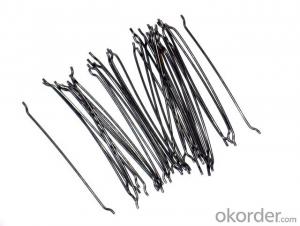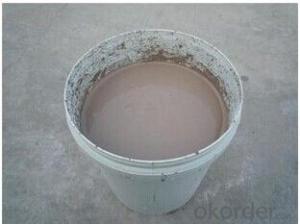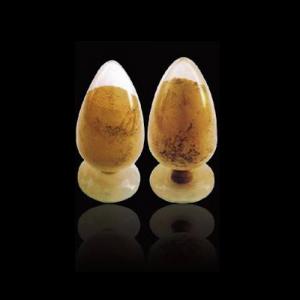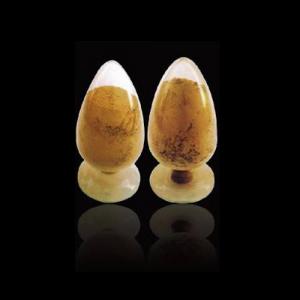Alumina Spinel Castable for Ladle and Tundish
- Loading Port:
- China Main Port
- Payment Terms:
- TT or L/C
- Min Order Qty:
- 2 m.t.
- Supply Capability:
- 5000 Tons Per Month m.t./month
OKorder Service Pledge
OKorder Financial Service
You Might Also Like
General Information of Alumina Spinel Castable for Ladle and Tundish
FIREF alumina spinel castable for ladle and tundish made as per international standards, is known for its excellent corrosion resistance, long operating life and high refractoriness. Further, it can be provided in different specifications as required.
Technical data of Alumina Spinel Castable for Ladle and Tundish

Production line and packing of Alumina Spinel Castable for Ladle and Tundish
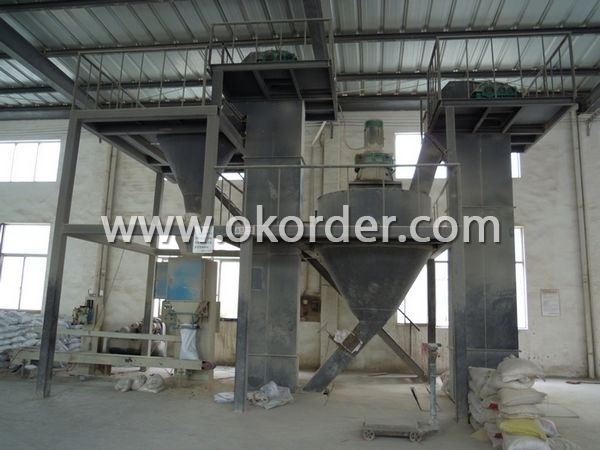
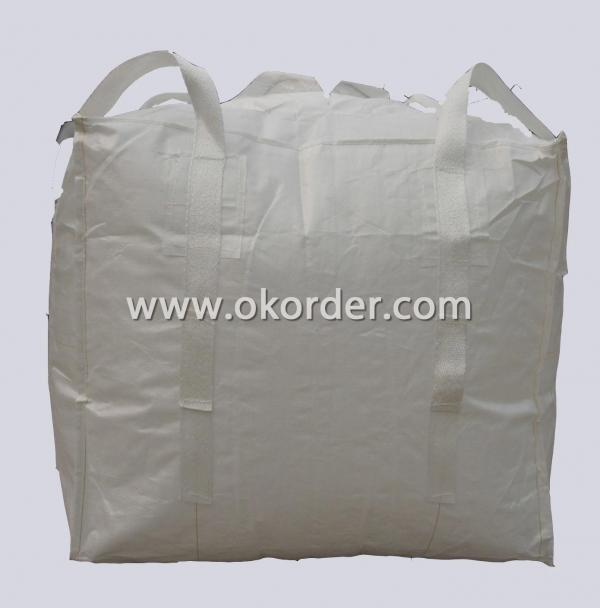
Feature of Alumina Spinel Castable for Ladle and Tundish
Long operating life
Excellent corrosion resistance
High refractoriness
Application of Alumina Spinel Castable for Ladle and Tundish
FIREF alumina spinel castable for ladle and tundish can be used widely in ladle and tundish.
- Q:What are the considerations for selecting monolithic refractories for reheating furnaces?
- When choosing monolithic refractories for reheating furnaces, there are several important factors to consider: 1. Temperature requirements: It is crucial to select monolithic refractories that can withstand the desired temperature range without experiencing significant thermal degradation or failure. These refractories must have a high refractoriness to maintain their structural integrity under these conditions. 2. Thermal shock resistance: Reheating furnaces often undergo rapid temperature changes, which can cause cracking and spalling. Therefore, it is essential to choose monolithic refractories with good thermal shock resistance to prevent premature failure of the lining. 3. Mechanical strength: The monolithic refractories should have sufficient mechanical strength to withstand the stresses caused by the weight of the materials being heated and any mechanical movements within the furnace. This helps to prevent deformation or structural failure of the refractory lining. 4. Chemical compatibility: The refractories must be chemically compatible with the atmosphere and process gases in the reheating furnace. They should resist chemical attacks from the gases or any corrosive substances generated during the reheating process. This ensures a longer service life for the refractory lining. 5. Abrasion resistance: Reheating furnaces often handle abrasive materials, so it is important to choose monolithic refractories with good abrasion resistance. This helps to minimize wear and extend the lifespan of the lining. 6. Ease of installation: Monolithic refractories offer advantages in terms of ease of installation compared to traditional brick refractories. However, it is important to consider the installation method and time required for the chosen monolithic refractory. Some monolithic refractories may require specialized equipment or techniques for installation. 7. Cost-effectiveness: Although the initial cost of monolithic refractories may be higher than traditional brick refractories, their longer service life and ease of installation can result in overall cost savings. Therefore, it is crucial to assess the cost-effectiveness of different monolithic refractory options when selecting the most suitable one for the reheating furnace. By considering these factors, you can make an informed decision when choosing monolithic refractories for reheating furnaces, ensuring optimal performance, durability, and cost-effectiveness.
- Q:How do monolithic refractories help in enhancing the durability of iron and steel equipment?
- Monolithic refractories play a vital role in increasing the durability of iron and steel equipment. They offer high resistance to extreme temperatures, chemical attack, and mechanical wear. Unlike traditional brick or castable refractories, monolithic refractories are made from a single, uniform material, making them stronger and more reliable. The ability of monolithic refractories to withstand high temperatures is crucial in iron and steel manufacturing processes. They can endure temperatures above 3000°F (1650°C) without losing their structural integrity, preventing premature equipment failure. This thermal resistance helps maintain the shape and structure of the refractory lining, ensuring efficient and consistent equipment performance. In addition to their heat resistance, monolithic refractories also possess excellent chemical resistance. This is important because iron and steel equipment often comes into contact with corrosive substances like molten metal, slag, and various chemicals. The ability of monolithic refractories to resist chemical attack prevents degradation and erosion of the equipment's lining, extending its lifespan. Moreover, monolithic refractories provide exceptional mechanical strength and wear resistance. The equipment is constantly exposed to abrasive materials, physical impacts, and mechanical stress, which can cause severe damage. However, the dense and compact structure of monolithic refractories makes them highly resistant to mechanical wear, minimizing the risk of erosion and spalling. The flexibility and versatility of monolithic refractories further enhance the durability of iron and steel equipment. They can be easily molded, shaped, and installed in complex geometries, ensuring a tight and precise fit. This eliminates the formation of gaps or weak points, which could result in thermal or chemical leakage, reducing the risk of equipment failure. In conclusion, the use of monolithic refractories significantly improves the durability of iron and steel equipment. They offer exceptional resistance to high temperatures, chemical attack, and mechanical wear. By ensuring the longevity and reliability of the equipment, monolithic refractories enhance operational efficiency and cost-effectiveness in the iron and steel industry.
- Q:How do monolithic refractories prevent slag penetration?
- Slag penetration is effectively prevented by monolithic refractories due to several mechanisms. Firstly, the high-quality materials used in monolithic refractories, such as alumina, silica, and magnesia, possess exceptional resistance to slag attack. These materials have a high melting point and can endure the corrosive nature of the slag. Secondly, the design of monolithic refractories incorporates a dense and compact structure that minimizes porosity. Slag penetration occurs when the molten slag infiltrates the pores and cracks of the refractory material. By reducing porosity, monolithic refractories create a barrier that restricts the entry of slag into the refractory lining. Furthermore, monolithic refractories can be chemically bonded to the substrate, resulting in a strong and impermeable bond. This bond enhances resistance to slag penetration by eliminating any gaps or weak points through which the slag could seep. Moreover, monolithic refractories can possess a high thermal shock resistance. Slag penetration is often intensified by thermal cycling, wherein the refractory material undergoes rapid temperature changes. Monolithic refractories with high thermal shock resistance can endure these temperature fluctuations without cracking or spalling, therefore decreasing the risk of slag penetration. Additionally, the effective prevention of slag penetration relies on the proper installation and maintenance of monolithic refractories. The refractory lining must be appropriately designed, with the right thickness and geometry, in order to provide maximum protection against slag attack. Regular inspection and repair of any damaged or worn-out areas can also prevent slag penetration. In summary, monolithic refractories prevent slag penetration through their excellent resistance to slag attack, dense structure, chemical bonding, high thermal shock resistance, and proper installation and maintenance. By working together, these factors create a robust and impermeable barrier that safeguards the underlying substrate from the corrosive effects of slag.
- Q:Can monolithic refractories be used for the lining of reheating furnaces and walking beam furnaces?
- Yes, monolithic refractories can be used for the lining of reheating furnaces and walking beam furnaces. Monolithic refractories are a type of refractory material that is characterized by its ability to be cast or gunned into place, rather than being made up of individual bricks or precast shapes. This makes them highly versatile and adaptable for various furnace applications, including reheating furnaces and walking beam furnaces. Reheating furnaces are used to heat metal products to a specific temperature before further processing, such as rolling or forging. The lining of these furnaces is subjected to high temperatures, thermal cycling, and mechanical stress. Monolithic refractories are well-suited for these conditions, as they have excellent thermal shock resistance and can withstand rapid temperature changes without cracking or spalling. Walking beam furnaces are used in the steel industry for the continuous heating and transport of steel slabs or billets. These furnaces require a lining material that can withstand the abrasion and mechanical stress caused by the movement of the material. Monolithic refractories with high abrasion resistance and good mechanical strength are ideal for the lining of walking beam furnaces. Additionally, monolithic refractories offer other advantages such as easy installation, reduced downtime for repairs, and improved energy efficiency. They can be tailored to specific furnace designs and can be easily repaired or replaced when necessary. In conclusion, monolithic refractories are a suitable choice for the lining of reheating furnaces and walking beam furnaces due to their ability to withstand high temperatures, thermal cycling, mechanical stress, and abrasion. Their versatility, ease of installation, and repair make them a preferred option for these furnace applications.
- Q:How do monolithic refractories improve the lining of converters and refining vessels?
- Improving the lining of converters and refining vessels is a crucial role played by monolithic refractories in several ways. To begin with, these refractories offer exceptional thermal insulation properties, which effectively maintain the desired temperature within the converters and refining vessels. This is particularly important as the metallurgical processes require high temperatures to be effective. Furthermore, the high chemical resistance of monolithic refractories is vital in the harsh conditions of converters and refining vessels. These vessels often come into contact with corrosive materials and aggressive slags, but the monolithic refractories prevent any deterioration or erosion of the lining caused by these substances. In addition, the mechanical strength and stability provided by monolithic refractories ensure that the lining remains intact even under high operational stresses. This is especially significant in converters and refining vessels where frequent mechanical movements and thermal expansions occur. Moreover, monolithic refractories offer easy installation and repair compared to traditional bricks, which require complex and time-consuming assembling. Monolithic refractories can be applied as a single mass, minimizing downtime during installation or repair. This results in time and cost savings for maintaining the lining of converters and refining vessels. Overall, the utilization of monolithic refractories significantly enhances the performance and longevity of converters and refining vessels. Their excellent thermal insulation, chemical resistance, mechanical strength, and ease of installation and repair guarantee efficient and reliable operation in metallurgical processes.
- Q:How do monolithic refractories contribute to reducing emissions in iron and steel processes?
- Monolithic refractories play a crucial role in reducing emissions in iron and steel processes by providing superior insulation, increased energy efficiency, and improved control over the production process. These refractories are designed to withstand extreme temperatures and harsh conditions, effectively minimizing heat loss and reducing the need for excessive fuel consumption. By creating a highly insulated environment, monolithic refractories enable better temperature control, leading to optimized combustion and reduced emissions of greenhouse gases. Additionally, their high resistance to wear and corrosion helps prevent the formation of pollutants, thereby contributing to a cleaner and more sustainable iron and steel industry.
- Q:How do monolithic refractories improve the efficiency of ladle and tundish lining systems?
- The efficiency of ladle and tundish lining systems is greatly enhanced by monolithic refractories in several ways. Firstly, these refractories are made from a single piece of material, eliminating the need for joints or seams. This seamless construction guarantees a lack of weak points in the lining system, reducing the chances of molten metal leakage or infiltration. Moreover, monolithic refractories possess exceptional thermal insulation properties. With their low thermal conductivity, they are able to withstand high temperatures without transferring heat to the surrounding environment. This insulation capability minimizes heat loss from the ladle or tundish, resulting in improved heat retention and energy efficiency. Additionally, it ensures that the desired temperature of the molten metal is maintained, preventing premature solidification and ensuring the necessary fluidity for casting. Furthermore, monolithic refractories exhibit outstanding resistance to chemical attacks caused by molten metal and slag. Their excellent corrosion resistance properties ensure the durability and integrity of the lining, even in the face of aggressive chemical reactions. This resistance to corrosion prolongs the lifespan of the lining system, reducing the need for frequent maintenance and replacement, thereby increasing overall efficiency and reducing downtime. Another advantage of monolithic refractories is their easy installation. Unlike traditional brick or block linings, monolithic refractories can be applied as a single, uniform layer, simplifying and speeding up the installation process. This reduces the time required for lining repairs or replacements, minimizing disruptions to production and enhancing the overall operational efficiency of ladles and tundishes. In conclusion, monolithic refractories enhance the efficiency of ladle and tundish lining systems through their seamless construction, excellent thermal insulation, superior corrosion resistance, and easy installation. These characteristics ensure improved heat retention, reduced heat loss, increased durability, and minimized downtime, resulting in enhanced productivity and cost-effectiveness for metal casting processes.
- Q:What are the quality control measures for monolithic refractories in the iron and steel industry?
- To ensure the efficiency and safety of the production process in the iron and steel industry, it is crucial to implement quality control measures for monolithic refractories. These measures encompass a range of inspections and tests throughout the manufacturing and installation stages. To begin with, rigorous testing is conducted on the raw materials used for monolithic refractories. This involves analyzing the chemical composition, particle size distribution, and impurity content. These tests are essential to ensure that the ingredients meet the required specifications and are suitable for the intended application. During the production process, the focus of quality control measures lies in monitoring the mixing and blending of the materials. This ensures that a homogeneous mixture is achieved, preventing any inconsistencies in the final product. Additionally, the density and viscosity of the refractory castables or plastics are checked to maintain the desired physical properties. Once the monolithic refractories are manufactured, they undergo several performance tests. These tests involve determining properties such as cold crushing strength, modulus of rupture, and thermal conductivity. These characteristics are crucial in ensuring that the refractories can withstand the extreme temperatures and mechanical stress present in the iron and steel industry. Aside from laboratory testing, quality control measures also involve on-site inspections during installation. This includes verifying the correct application techniques, such as proper vibration, curing, and drying procedures. It is of utmost importance to ensure that the monolithic refractories are applied correctly to achieve optimal performance and longevity. Furthermore, regular sampling and monitoring of the refractories' performance are carried out during operation. This allows for the early detection of any signs of degradation or wear, enabling proactive maintenance and replacement before any significant issues arise. In conclusion, the quality control measures for monolithic refractories in the iron and steel industry encompass comprehensive testing, monitoring, and inspection procedures. These measures are implemented to guarantee the reliability, durability, and efficiency of the refractories, ultimately contributing to the smooth operation of the iron and steel production processes.
- Q:Can monolithic refractories be used in electric arc furnaces and induction furnaces?
- Yes, monolithic refractories can be used in both electric arc furnaces and induction furnaces. Monolithic refractories are versatile and can be shaped and installed easily, making them suitable for various types of furnaces, including electric arc furnaces and induction furnaces. These refractories are composed of a single material, such as castables, gunning mixes, ramming mixes, and plastic refractories, which can withstand high temperatures and thermal shock. They are commonly used to line the walls, roofs, and bottoms of furnaces to provide insulation and protection against the extreme heat generated during the melting and refining processes. Monolithic refractories offer excellent resistance to chemical attack, erosion, and mechanical stress, making them ideal for use in electric arc furnaces and induction furnaces, where intense heat and harsh operating conditions are encountered.
- Q:What are the key factors to consider when designing the lining system with monolithic refractories?
- When designing a lining system with monolithic refractories, there are several key factors that need to be considered in order to ensure optimal performance and longevity of the lining. These factors include: 1. Material selection: Choosing the right monolithic refractory material is crucial. Factors such as the operating temperature, chemical environment, and mechanical stress need to be taken into account. Different monolithic refractories have varying properties and performance characteristics, so selecting the most suitable material for the specific application is essential. 2. Thermal expansion: Monolithic refractories, like any other material, expand and contract with changes in temperature. It is important to consider the thermal expansion properties of the refractory material and how it will interact with the surrounding structure. Proper expansion joints or design features should be incorporated to accommodate thermal expansion and prevent cracking or spalling. 3. Installation technique: The method of installation plays a critical role in the performance of the lining system. It is important to follow the manufacturer's guidelines for mixing, placing, and curing the monolithic refractory material. Improper installation can lead to reduced lining integrity, decreased thermal conductivity, and compromised structural stability. 4. Bonding and anchoring: Ensuring a strong bond between the monolithic refractory and the substrate is essential for effective lining performance. Proper surface preparation, selection of suitable bonding agents, and appropriate anchoring techniques should be considered to enhance the adhesion and stability of the lining system. 5. Structural design: The structural design of the lining system should be carefully planned to withstand the mechanical stresses and operational conditions. Factors such as load-bearing capacity, thermal shock resistance, and thermal cycling should be taken into consideration during the design phase. Reinforcement materials, such as steel fibers or mesh, may be required to enhance the structural integrity and prevent cracking or spalling. 6. Maintenance and repair: Anticipating the need for maintenance and repair is crucial for the longevity of the lining system. Consideration should be given to access points, inspection ports, and repair techniques. Regular inspections and proactive maintenance can help identify and address any issues before they escalate and lead to major failures. By considering these key factors when designing the lining system with monolithic refractories, one can ensure a well-designed and effective lining that can withstand the harsh conditions and provide long-term performance.
1. Manufacturer Overview |
|
|---|---|
| Location | Henan, China |
| Year Established | 2007 |
| Annual Output Value | Above US$ 60 Million |
| Main Markets | Mid East; Eastern Europe; North America |
| Company Certifications | ISO 9001:2008 |
2. Manufacturer Certificates |
|
|---|---|
| a) Certification Name | |
| Range | |
| Reference | |
| Validity Period | |
3. Manufacturer Capability |
|
|---|---|
| a)Trade Capacity | |
| Nearest Port | Tianjin |
| Export Percentage | 31% - 50% |
| No.of Employees in Trade Department | 21-50 People |
| Language Spoken: | English; Chinese |
| b)Factory Information | |
| Factory Size: | Above 36,000 square meters |
| No. of Production Lines | Above 5 |
| Contract Manufacturing | OEM Service Offered |
| Product Price Range | Average |
Send your message to us
Alumina Spinel Castable for Ladle and Tundish
- Loading Port:
- China Main Port
- Payment Terms:
- TT or L/C
- Min Order Qty:
- 2 m.t.
- Supply Capability:
- 5000 Tons Per Month m.t./month
OKorder Service Pledge
OKorder Financial Service
Similar products
New products
Hot products
Hot Searches
Related keywords










